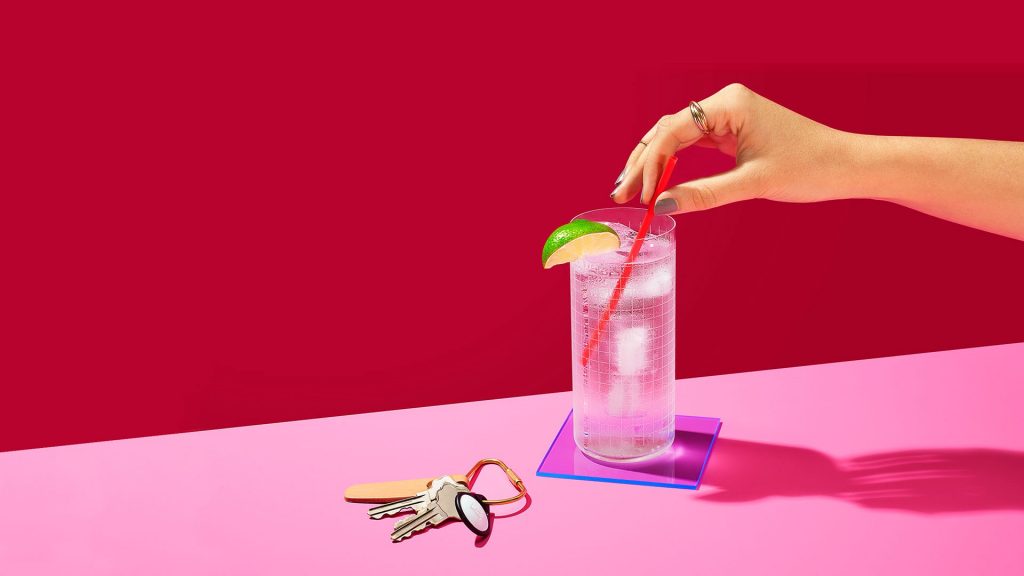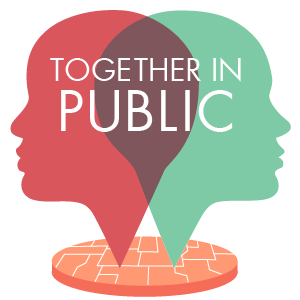

A few months ago, a man followed me out of a metro station and down the street in the middle of the night. This hadn’t happened for a while, and I had started to assume that it wouldn’t anymore–that perhaps because of my age, or the way I’ve learned to walk over the years, men had become less likely to target me in this particular way.
But this man continued to follow me despite my multiple efforts to dodge him, and by the time I got home I was on the phone with my sister (and roommate), who had come out to the front steps of our apartment building so that she’d be able to see if anything dicey happened as I approached. When we got inside, she said, “This doesn’t mean it’s your fault at all and it’s definitely not your fault, but maybe it’s because of your pigtails.”
It was Dyke Day, Los Angeles’s annual Pride Month picnic for queer women. During events like these, when I know that I’m not going to be around many men or straight people, I play up my femme-ness, and do things like wear pigtails. Queer femme identity, for me and a lot of other people, is about challenging the idea that to be feminine is to be weak, or that to be feminine is to want a man. But in this instance (or so we speculated), because I appeared more playfully feminine, this man had assumed that I would be a good target.
A few days later, I found myself typing “stun gun” into Amazon’s search bar. The options that the site displayed, from many different companies, appeared primarily in two colors: black and pink. While I would like to think that some of these manufacturers make pink products in an attempt to challenge associations between femininity and weakness, I have my doubts.
There are numerous products targeted specifically at women who are trying to avoid sexual assault. Some of these items–like the pink stun guns–are simply existing nonlethal weapons in a different color, many of them claiming to be “police grade.” Some companies go further than adding a pink option: Defense Divas claims that it designed its “Sting Ring” product to better fit “a woman’s hand,” as though our hands were all the same size.
Although I’ve thought about it, I have never actually bought a Mace dispenser or a stun gun. If my hands were constantly brushing up against a police-grade weapon while I was fumbling in my bag for my phone, I would feel less safe, not more. I don’t want extra reminders of my vulnerability added to my daily routine. Maybe this is the reason that companies make pink stun guns and Mace dispensers, sometimes bedazzled, for women. It’s a way to soften the reality of why we’re made to feel the need for such a thing. It’s something else that’s fun and pretty to put in our bag, rather than a reminder that we could get hurt at any time.
This new crop of ideas includes panic buttons that can be worn as a shiny necklace, or as a pendant or brooch. There are cute shorts that are supposed to be impossible for anyone but the wearer to get off, and nail polish that can detect date-rape drugs. The aesthetics aren’t really about making us feel safer–and the products don’t actually make us safer, either, because most of them will never make it to market. The nail polish, for example, from a company called Undercover Colors, was never released, despite raising millions of dollars in funding; instead, due to the difficulties in turning the original concept into a viable product, the company ended up producing a keychain-sized chip that can detect a handful of common date-rape drugs.
Other examples of these kinds of products haven’t managed even that compromised form of success, failing to appear in any form at all in the years since their fundraisers went viral. Rather, the messages that these products offer serve as one more way of disguising the reality of sexual assault and how it works, and anti-rape activists and writers have repeatedly criticized such products for putting the onus of preventing sexual assault on potential victims. Instead of truly creating a product that can help women, the people behind these devices have succeeded in making viral campaigns that spread a common message–that thinking about rape, having a reminder of rape literally on your body, goes with the routine for achieving magazine-prescribed femininity.
The campaign videos for Stiletto, another company offering a panic button that looks like a necklace pendant, and AR Wear, the maker of those protective shorts, feature remarkably similarly dressed and coiffed young women, checking themselves out in the mirror as they don their glamorous, rape-preventing apparel along with a tight black dress, arranging their hair into the perfect breezy do, picking up a sparkly purse. The videos reminded me of the Seventeen magazine articles I used to read, which implored me to keep face wipes in my purse to use in the event of mid-evening forehead shine. Rape is added to the lengthy list of the things a woman should keep in mind before going out, in addition to skin oil and bra lines and the effect that gravity can have on our hair.
“Feeling safe is beautiful,” says the narrator of the Stiletto video, rather on the nose. The visuals make it clear that the type of beauty she’s talking about is highly conventional, the type that we associate with a very thin smoky-eyed woman in a little black dress. And this is what lies behind the feminizing of rape-prevention products–the idea that we can prevent threats without being threatening, at least not to the men whom we’re supposed to attract. It’s the same reason that Pure Barre advertises the ability to give women “long, lean muscles without bulk.” We’re supposed to want to be strong–but only to the point where it’s aesthetically pleasing to the most boring variety of straight man.
No matter what I’m wearing, I’ve found that the best way to get men to leave me alone is with a death stare and, if necessary, a low, barking yell. Both of these are skills that I’ve cultivated over years of being harassed–and I value them as markers of feminine strength. On that Dyke Day night, I eventually turned around and stared at the man following me down the street, holding my water bottle menacingly in front of me. He paused, then changed direction. No device and no strategy will absolutely guarantee safety. But for me, knowing that my best line of defense is within, even if I’m not conscious of it all the time, is what provides the most peace of mind.


How We Get To Next was a magazine that explored the future of science, technology, and culture from 2014 to 2019. This article is part of our Together in Public section, on the way new technologies are changing how we interact with each other in physical and digital spaces. Click the logo to read more.
